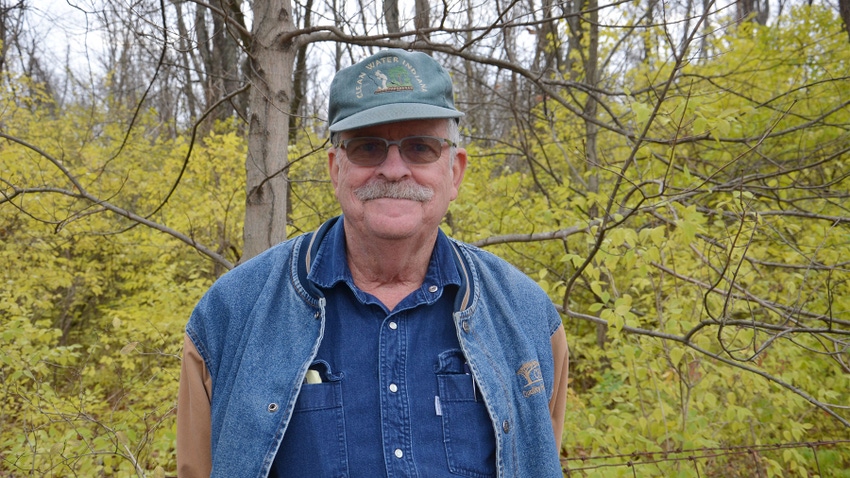
Ray Chattin, Vincennes, Ind., and Les Zimmerman, Clinton, Ind., were instrumental in helping achieve a major increase in state funding for soil conservation in Indiana.
“The funding is historic considering it is the first increase for Clean Water Indiana in 23 years,” Chattin says. “It more than doubles financial resources available from the state for conservation.
“Even so, this increase just moved Indiana from last to next to last in state funding for conservation among eight north-central region states. For context, Indiana ranks second in acres of prime farmland and first in hardwood timber.”
Investing in conservation
How is new money used? Trevor Laureys, who was director of soil conservation within the Indiana State Department of Agriculture until Feb. 1, provided details. First, $2,313,285 was awarded for fiscal year ’24 through Clean Water Indiana grants to soil and water conservation districts and other organizations for projects that address soil and water conservation issues. Total grants in previous years averaged $1 million.
“This was the largest round of CWI competitive grants ever,” Laureys reported. Even so, total requests were $4.5 million, meaning a large chunk went unfunded.
Meanwhile, matching funds to SWCDs increased from $10,000 to $20,000, taking $1,840,000 in funds for fiscal year ’24. The same level of funding will be provided for ’25.
Local SWCDs are where the rubber meets the road, Chattin says. Each district has the flexibility to use these funds as it sees fit to address conservation issues. Dollars available for training SWCD staff were also increased.
Other major investments
“One major use will be expansion of the Conservation Reserve Enhancement Program, known as CREP,” Chattin says. “This will represent nearly a $2 million additional investment over the biennium.
“It will increase eligibility from 11 watersheds to 38, which is a major step forward. It will also leverage at least $14 million with federal dollars.”
The goal is to complete expansion of CREP later in 2024. A portion of CREP payments go to SWCDs administering them to cover costs.
Resilient Indiana is a new opportunity to leverage state funds. Indiana’s contribution, $540,000, coupled with Inflation Reduction Act funds through NRCS, will result in 11 technicians and a director providing technical assistance to landowners over five years.
“It would not have been possible without increased state money for match,” Chattin explains.
More to do
A significant portion of CWI grant funds created positions that will provide landowners with management plans to address invasive species, Chattin explains. These positions also will work with local cooperative invasive species management areas, known as CISMAs, with educational outreach and training events.
“Invasive species are a huge problem,” Chattin says. “We’re raising awareness, and this funding helps, but there is much more to do. This begins to address invasive species concerns on private lands and enhances the capacity of local CISMAs through their partnerships with SWCDs.”
Still, Chattin believes more state support is warranted. “The need for funding is tremendous as Indiana attempts to gain parity with neighboring states,” Chattin says. “The Indiana Association of SWCDs will strive to gain incremental increases in CWI funding regularly. We can’t wait another 23 years!”
About the Author(s)
You May Also Like




